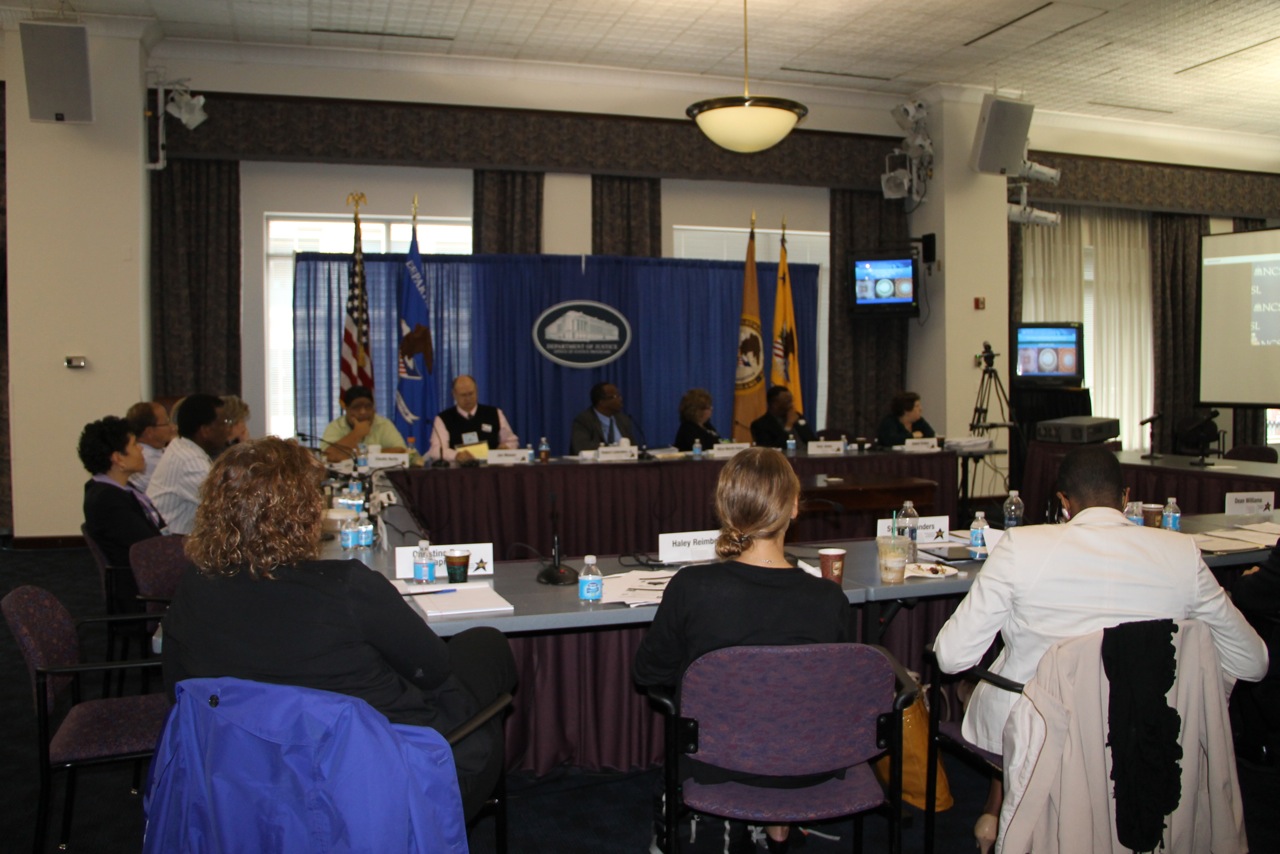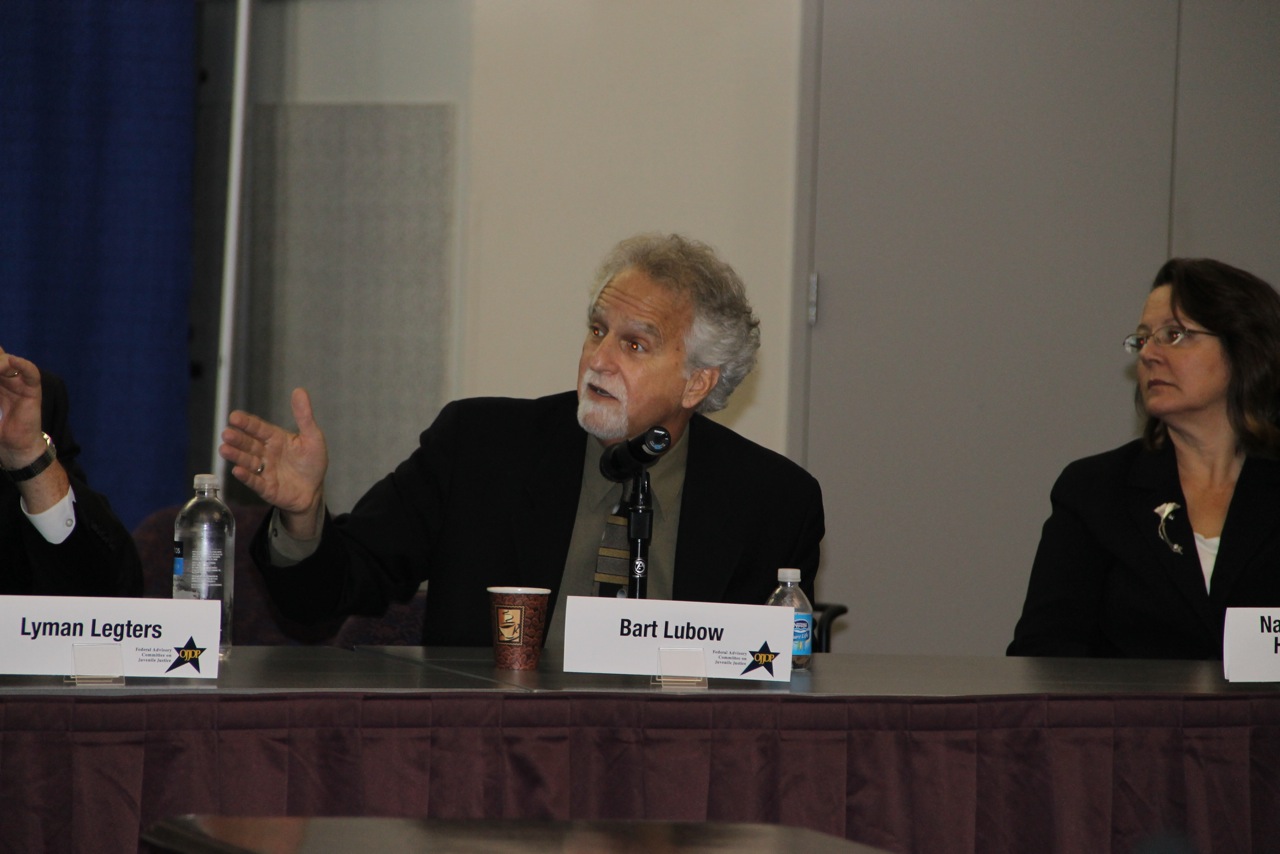WASHINGTON, D.C. – Thirteen advocates and professionals from around the country who serve as advisors to the federal office for juvenile justice met for two days last week in Washington, D.C., to share information on reforms and funding at the state and federal levels.
 The Federal Advisory Committee on Juvenile Justice,which normally meets online every few months, gathered face-to-face for the first time in a year. Its last online meeting occurred Aug. 10.
The Federal Advisory Committee on Juvenile Justice,which normally meets online every few months, gathered face-to-face for the first time in a year. Its last online meeting occurred Aug. 10.
Some of the reforms the committee discussed lie within the federal Office of Juvenile Justice and Delinquency Prevention itself. Melodee Hanes, the acting office administrator, told committee members on the opening day of the meeting that a structural reorganization of her office, which has been in the works for months, would be announced soon. The office is also close to releasing its program plan for next year, she said.
The associate administrator for budget and planning, Janet Chiancone, described to the committee a “mixed” outlook for federal funding for juvenile justice in the 2013 fiscal year. Federal money for programs administered by the federal juvenile justice office has steadily fallen from $461.5 million in fiscal year 2009 to $277 million in fiscal year 2012, a 41 percent decline, she said.
Although the 2013 fiscal year began Oct. 1, a gridlocked Congress has yet to reach a budget deal. The proposed House budget for 2013 further slashes funds for OJJDP programs to $214 million, while the Senate version increases funding from last year’s level for the OJJDP to $299.5 million, she said. Both chambers are in recess until after the presidential election.
On Friday, committee members were briefed on changes in federal and state legislation on juvenile justice in recent years, trends that speakers said were driven by falling rates of juvenile crime, declining youth incarceration rates, the availability of better research and a shift away from treating children like adults under the law.
Friday’s speakers included Nancy Gannon Hornberger, executive director of the Washington-D.C.-based Coalition for Juvenile Justice – a network of citizens, advocates and professionals from every state who advise their local governments on juvenile justice issues and monitor their adherence to federal guidelines — and Bart Lubow (pictured right), director of the juvenile justice strategy group for the Annie E. Casey Foundation, a Baltimore-based nonprofit that has played a key role in funding reform initiatives around the country.
of the Washington-D.C.-based Coalition for Juvenile Justice – a network of citizens, advocates and professionals from every state who advise their local governments on juvenile justice issues and monitor their adherence to federal guidelines — and Bart Lubow (pictured right), director of the juvenile justice strategy group for the Annie E. Casey Foundation, a Baltimore-based nonprofit that has played a key role in funding reform initiatives around the country.
Sarah Brown, a senior researcher at the National Conference of State Legislatures, a bipartisan group of state legislators and their staff, described her recent report on trends in state legislation on juvenile justice in the last 10 years.
Speaking from Colorado via videoconference, Brown pointed to three separate rulings since 2005 by the U.S. Supreme Court that have adjusted federal standards for juvenile sentencing by abolishing the death penalty, life sentences without parole for non-homicides, and mandatory life sentences without parole for juveniles. These rulings reflect the impact of new research on adolescent development and highlight how many states are shifting toward treating juvenile offenders differently than adults, she said.
Between 2001 and 2011, 20 states passed laws to expand the jurisdiction of juvenile courts, such as by raising the age limit for juvenile offenses, she said. Other state trends include the passage of legislation improving young people’s access to sound legal defense, reallocating funds from correctional facilities to community-based alternatives, and focusing on young people’s mental health needs.
At least 10 states have passed laws to address racial disparities in the detention and incarceration of youth in the last 10 years, Brown said. And more than half of all states have passed laws aimed at supporting young people once they are released from detention or confinement.
Hornberger, who has lobbied Congress for system reform for 25 years, provided historical perspective on the trends affecting federal policy changes and provided recommendations for future legislation, including the long-overdue reauthorization of a sweeping federal bill on juvenile justice that was first passed by Congress in 1974.
“Generally, Congress has regarded juvenile justice and delinquency prevention to be a limited role,” Hornberger said. However, the 1970s brought a significant shift in the way people thought about the detention and incarceration of youth, their treatment as status offenders, their placement in adult jails, and their separation from adult offenders by sight and sound, she said.
The resulting federal legislation, the sweeping Juvenile Justice and Delinquency Prevention Act of 1974, marked “a sea change” that forced states to meet federal standards on how to treat youth within the justice system, Hornberger said. Subsequent reauthorizations of the Act in the 1980s and 1990s added more requirements for states, including new rules asking states to explore racial disparities in their confinement of youth.
Last reauthorized 10 years ago, the Juvenile Justice and Delinquency Prevention Act was due for reauthorization again in 2007 but has languished in Congress. Although a U.S. Senate committee has twice approved the reauthorization in recent years, the bills did not make it to the Senate floor. The House of Representatives has not acted on a reauthorization bill nor any legislation to do with juvenile justice in the last six years, Hornberger said.
Hornberger remains stoic. The 2002 reauthorization took six years to push through, she said. “It’s always been a long haul to get this Act reauthorized.”
In general, federal policy on juvenile justice has traditionally swung like a pendulum, with equilibrium rarely in the middle, she said. “Members of Congress are consistently going back and forth between punitive and rehabilitative approaches.”
Policy swings are frequently affected by changes in leadership, whether in the White House, on congressional committees, or within the Office of Juvenile Justice and Delinquency Prevention itself, she said.
Congressional legislation still demonstrates a trend toward criminalizing normal adolescent behavior, such as underage drinking or sexting, Hornberger said. And federal legislators are still wrestling with the choices of institutionalized care versus family and community-based solutions, she said.
“There have been trends in time where national policy has really spurred state reforms,” like in the 1970s, Hornberger said. But these days, national policy is playing catch-up with reforms initiated by national foundations and some states, she added.
While federal trends in legislation and policy so far appear promising, the legislative progress is fragile, she warned — especially in critical areas like the consideration of adolescent development and racial and ethnic disparities.
Speaking after Hornberger, Lubow gave a spirited presentation that made clear he too thought there was lots of room for improvement.
For every 100,000 young people in the United States, 336 are locked up, the highest rate in the developed world, he said. South Africa is in second place, at nearly one-fifth the rate of the United States. This could not be explained by disparities in juvenile crime, he said.
“We lock kids up in this country for a lot of minor stuff. In fact, we lock them up for things that we do not lock adults up for,” Lubow said. “We do that, frankly, because adults are bullies. When we get frustrated with kids who do not follow our rules, we throw them into detention centers.”
What would happen, he asked, if judges and law enforcement could not fall back upon incarcerating kids when they were angered and frustrated by their behavior? “What positions, what creativity, what alternatives would we come up with?” he asked.
Necessary innovations include limiting the types of young offenders who get incarcerated, increasing non-residential community alternatives to incarceration, and changing the financial incentives for local governments to keep their children within their own system and not the state’s, Lubow said.
Sometimes reforms only happen after someone takes off a shoe and bangs it on the table, Lubow told the committee.
Photos by Kaukab Jhumra Smith































